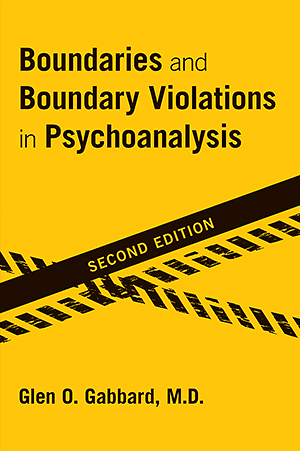Chapter 7.Boundaries in Cyberspace
Sections
Excerpt
As I noted in the preface, when the first edition of this volume came out, the impact of cyberspace on psychoanalysis was rarely discussed. Even now, 20 years later, psychoanalysis has been slow to integrate the developments involving the Internet era into an expanded perspective that includes a major alteration of the frame. Turkle (2011) has written about the transformation of the sense of self in an era in which multiple identities and fluidity of self are greatly enhanced by the possibilities of Internet communication. Litowitz (2012) noted that conventional training in psychoanalysis may be insufficient to address the profound changes the Internet age is having on how we conceptualize what it means to be human and what humans need to survive. Psychoanalysts routinely receive e-mails and texts from patients now, and there is considerable concern about how this form of communication may alter phenomena such as transference, countertransference, confidentiality, and the nature of the psychoanalytic frame. Hartman (2012) noted that most analysts have begun to view online communication with patients as inevitable, but many discussions of this subject portray the arrival of an e-mail from the patient as an unwanted intrusion. In this chapter I will confine my discussion to the implications of the Internet realm for analytic boundaries and the analytic frame, knowing that this corner of cyberspace is a relatively small portion of the total picture of how cyberspace has expanded our cultural and psychological awareness. I have deliberately avoided dealing with the subjects of telephone and Skype analysis in this chapter because they involve modes of conducting analysis rather than how electronic communication intrudes into treatments that are conventionally conducted in person. Moreover, there is a growing literature on the subject of Skype and online psychoanalysis (Scharff 2015).
Access content
To read the fulltext, please use one of the options below to sign in or purchase access.- Personal login
- Institutional Login
- Sign in via OpenAthens
- Register for access
-
Please login/register if you wish to pair your device and check access availability.
Not a subscriber?
PsychiatryOnline subscription options offer access to the DSM-5 library, books, journals, CME, and patient resources. This all-in-one virtual library provides psychiatrists and mental health professionals with key resources for diagnosis, treatment, research, and professional development.
Need more help? PsychiatryOnline Customer Service may be reached by emailing [email protected] or by calling 800-368-5777 (in the U.S.) or 703-907-7322 (outside the U.S.).



